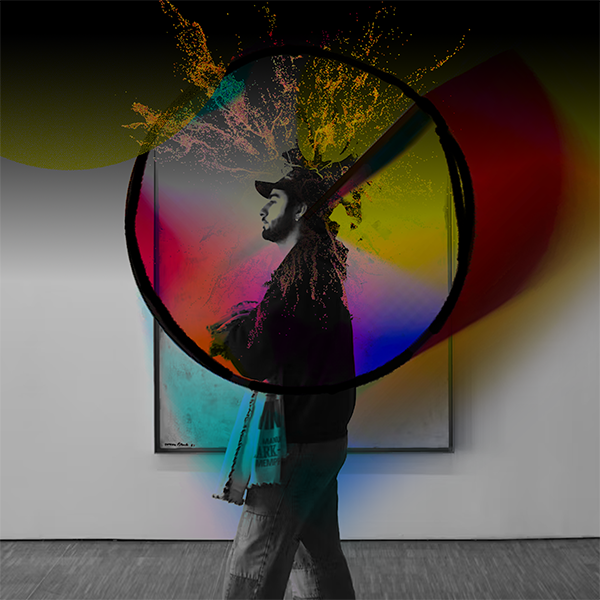3 Practices that Welcome Heaven Into Your Neighborhood
NT Wright has written:
Jesus’ resurrection is the beginning of God’s new project not to snatch people away from earth to heaven but to colonize earth with the life of heaven. That, after all, is what the Lord’s prayer is about.
We’ve just come throught the season of Eastertide in which we continue to think about what it means to “practice the resurrection” in our daily lives. What does it mean to live daily as people who are a foretaste of the kingdom? What does it look like to embody the fragrance of heaven here on earth as we wait for the consummation of the reign of God?
In my last article I wrote:
Instead of practicing a Gnostic Christianity, or holding to an eschatology that leads us to thinking that we will ultimately live a disembodied existence in a ghostly place called heaven, we must see this world as our home and engage in homemaking practices or habits that will help us work with God to bring his rule on earth. And we must do this locally because the local space is where God has placed us to be God’s shalom to our neighbors as we work together for God’s rule to manifest.
If we are to work with God’s mission to proclaim and embody his shalom in our world, then we must see this world as our ultimate home that God is bringing to restoration. This means that instead of primarily seeing this earth as our place of exile, which is a popular Christian metaphor for our relationship to the world, we see ourselves as homemakers in a reconstruction plan that is God inspired and designed.
If we are to work with God's mission to proclaim and embody his shalom in our world, then we must see this world as our ultimate home that God is bringing to restoration. Share on XTo Join God’s Mission is to Be a Homemaker
To be a homemaker does not mean that we can become comfortable. In our culture, homemaking can have connotations of settling down, insularity, and becoming complacent. Rather, homemaking from a missional perspective means that we discern the Spirit of God who is on mission in our neighborhoods where God has placed us. We bring affirmation to the places that represent the shalom of God. We disrupt and subvert that places that do not.
So what are some homemaking practices that we can be engaging today in our local neighborhoods? Here are three of them: celebration, re-enchantment, and placemaking.
1. Celebration
When we celebrate, we challenge the status quo which mocks us by saying “This is all there is.” When we celebrate, we embody hope—which is a subversion of our culture of despair.
Everyone on earth is acquainted with death, grief, and despair. We live in the “in-between times” where we wait for the consummation of the reign of God. There must be more room in Christian worship for lament, solidarity with those who suffer, and righteous anger towards the dark powers in our world.
However, we must not forget that our ultimate posture is joy because of the victory of Jesus Christ over those dark powers which cause such despair. As the authors of Slow Church write:
The resurrection of Jesus relieves us of the fear of death. ‘Where oh death, is your victory? Where, O death is your sting?’ (1 Cor 15:55). But the fuller story of the New Testament is that God’s people have been resurrected as the body of Christ. Just as Jesus is the embodiment of the shalom that God intends for creation, the church’s role in the drama of creation is likewise to be the embodiment of God’s shalom, albeit in a form that hasn’t yet been fully realized.
A characteristic of this shalom? Joy and celebration. These are foundational for God’s people as we make our pilgrim journey in our ultimate homeland.
As we work among the poor and the marginalized, we will often be plagued with feelings of inadequacy. The challenges of ministry in these broken places can be overwhelming. Most missionaries in these grief-filled contexts also make a habit to practice celebration—not only to create a positive atmosphere, but to prophetically embody the coming kingdom when we will see the death of death.
We can celebrate the progress that our neighborhoods are making towards God’s shalom. We can affirm people when they take small steps towards healing and breakthrough. We can celebrate community groups as they work to relieve inadequacies such as homelessness.
What if Christians were known for hosting and attending the most parties and events that celebrate the life of your community?
Where can you see God’s shalom peeping through the darkness in your neighborhood—and how can you then celebrate that?
2. Re-enchantment
In his book A Secular Age, Charles Taylor writes that the sacred has been stripped from the daily stuff of life. Contrary to Christendom—where church bells rang to call the faithful to prayer and buildings were designed to inspire awe of the merged power of state and Church—today we have no daily reminders of the sacred in our public life.
However, there are still traces of the sacred in the midst of a secular society.
People in our neighborhoods may not find these sacred spaces in churches or liturgy, but there are places in our neighborhoods that can provide context for the sacred.
Madeleine L’Engle has said in her book Walking on Water: Reflections on Faith and Art:
There is nothing so secular that it cannot be sacred, and that is one of the deepest messages of the Incarnation.
If we believe that our neighborhoods are sacred in that they are places where God’s Spirit is at work, then what does it mean to bring about “re-enchantment”? Phillip Sheldrake in The Spiritual City: Theology, Spirituality and the Urban says:
Re-enchantment seeks to make public space more than a context for human socialization created purely by consumerism or tourism. Rather, we should work imaginatively and experimentally with public space to make it the medium for a transformation of imagination and behavior through protest gatherings (non-legislative politics), art, education, and entertainment.
This means paying detailed attention to our place. It means working to redeem broken spaces in our communities. It means creating objects, activities, and gatherings that are helpful for people to connect with a sense of their own spirituality.
What does it mean for you to “re-enchant” your neighborhood?
How can a sense of the “sacred” be made visible for your community?
3. Placemaking
Re-enchantment leads to placemaking as a homemaking practice.
Again, this is about the practice of an embodied, deeply incarnational theology that understands that this world is our ultimate home.
Placemaking relates to the humanizing of a city or a community. Often designers plan cities with technology, cars, and production in mind.
But placemaking seeks the betterment of the city by advocating a more humane approach to design and planning—through mediums such as art, community consultation, and even action-research.
There is continuity between this world and the next. It is our responsibility and privilege to be placemakers in our local neighborhoods, redeeming what is needed and affirming what already exists that is good, just, and true.
In every sense, place-making is about beautifying, engaging with, and contributing to the local city neighborhood for its good. We can do this by engaging with local community groups involved in the design of our neighborhoods. We can also do this by making friends with local artists who work to bring beauty to the places where we live.
Making A Home in Your Neighborhood
What is the vision of “the good neighborhood” God would have for your community once you tell and embody the story of the reign of God in that place?
If we engage in homemaking practices, then we will be at work with God on his mission to bring his shalom into our world. We will then be the fragrance of another reality in a world that longs for the manifestation of a hope that can truly be trusted.
Homemaking from a missional perspective means that we discern the Spirit of God who is on mission in our neighborhoods where God has placed us. Here’s three practical ways we can enter into that work. Share on XFor more “homemaking” practices, check out Karina Kreminski’s new book, Urban Spirituality: Embodying God’s Mission in the Neighborhood.



